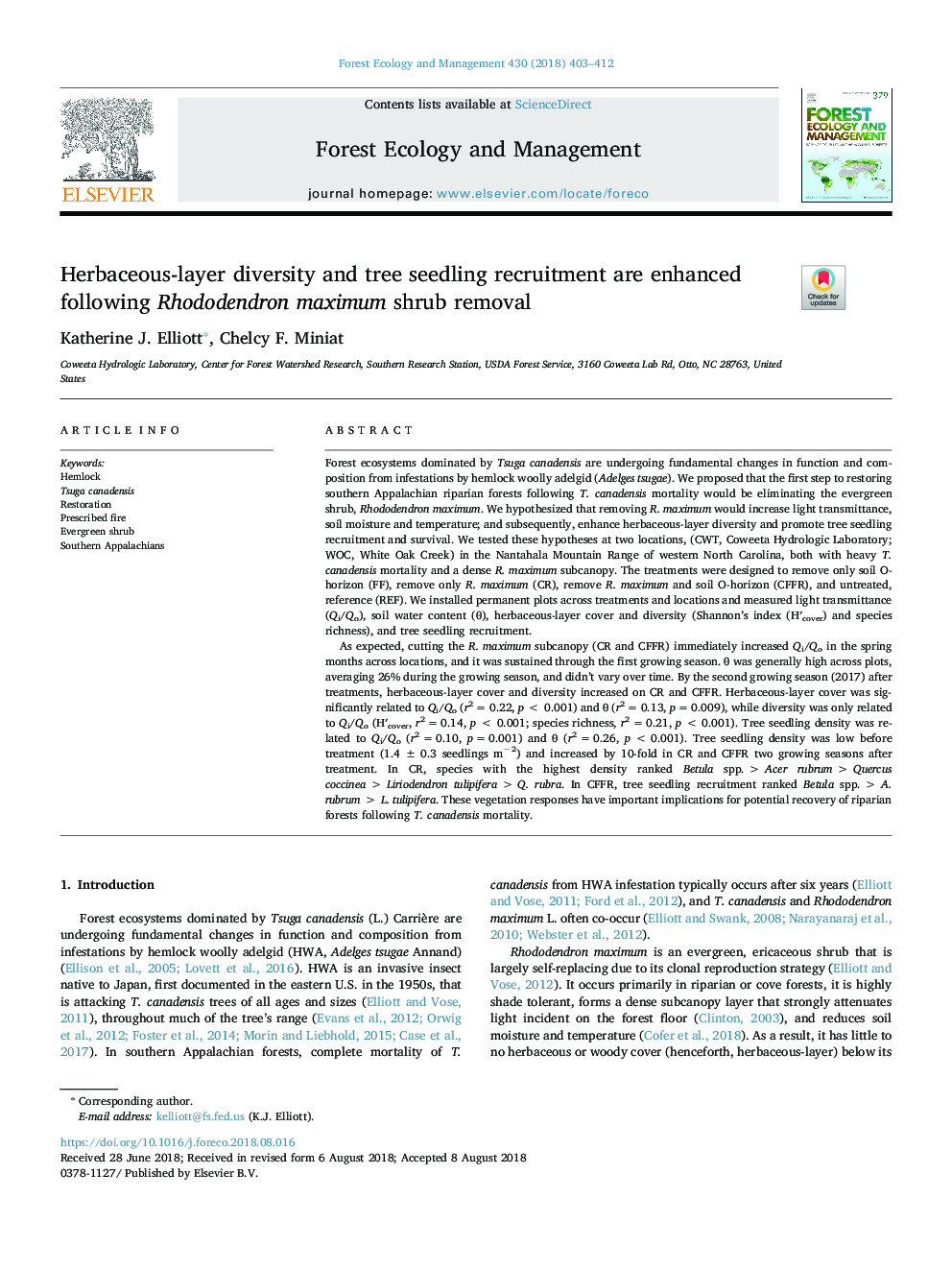| کد مقاله | کد نشریه | سال انتشار | مقاله انگلیسی | نسخه تمام متن |
|---|---|---|---|---|
| 11000035 | 1421330 | 2018 | 10 صفحه PDF | دانلود رایگان |
عنوان انگلیسی مقاله ISI
Herbaceous-layer diversity and tree seedling recruitment are enhanced following Rhododendron maximum shrub removal
ترجمه فارسی عنوان
تنوع گیاهچه های گیاهی و درختان نهال درختان پس از برداشتن حداکثر بوته های روده اندندرون افزایش می یابد
دانلود مقاله + سفارش ترجمه
دانلود مقاله ISI انگلیسی
رایگان برای ایرانیان
کلمات کلیدی
موضوعات مرتبط
علوم زیستی و بیوفناوری
علوم کشاورزی و بیولوژیک
بوم شناسی، تکامل، رفتار و سامانه شناسی
چکیده انگلیسی
As expected, cutting the R. maximum subcanopy (CR and CFFR) immediately increased Qi/Qo in the spring months across locations, and it was sustained through the first growing season. θ was generally high across plots, averaging 26% during the growing season, and didn't vary over time. By the second growing season (2017) after treatments, herbaceous-layer cover and diversity increased on CR and CFFR. Herbaceous-layer cover was significantly related to Qi/Qo (r2â¯=â¯0.22, pâ¯<â¯0.001) and θ (r2â¯=â¯0.13, pâ¯=â¯0.009), while diversity was only related to Qi/Qo (Hâ²cover, r2â¯=â¯0.14, pâ¯<â¯0.001; species richness, r2â¯=â¯0.21, pâ¯<â¯0.001). Tree seedling density was related to Qi/Qo (r2â¯=â¯0.10, pâ¯=â¯0.001) and θ (r2â¯=â¯0.26, pâ¯<â¯0.001). Tree seedling density was low before treatment (1.4â¯Â±â¯0.3 seedlings mâ2) and increased by 10-fold in CR and CFFR two growing seasons after treatment. In CR, species with the highest density ranked Betula spp.â¯>â¯Acer rubrumâ¯>â¯Quercus coccineaâ¯>â¯Liriodendron tulipiferaâ¯>â¯Q. rubra. In CFFR, tree seedling recruitment ranked Betula spp.â¯>â¯A. rubrumâ¯>â¯L. tulipifera. These vegetation responses have important implications for potential recovery of riparian forests following T. canadensis mortality.
ناشر
Database: Elsevier - ScienceDirect (ساینس دایرکت)
Journal: Forest Ecology and Management - Volume 430, 15 December 2018, Pages 403-412
Journal: Forest Ecology and Management - Volume 430, 15 December 2018, Pages 403-412
نویسندگان
Katherine J. Elliott, Chelcy F. Miniat,
